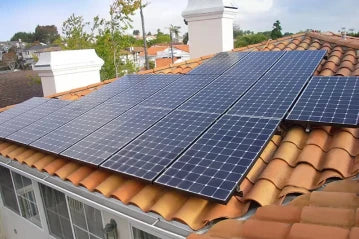
As the demand for renewable energy solutions continues to grow, many homeowners and businesses are turning to solar power as a reliable and eco-friendly option. When it comes to designing and implementing a solar energy system, the choice of equipment plays a pivotal role in its overall effectiveness and efficiency. In this blog post, we will explore the pros and cons of inverters with built-in solar charge controllers, shedding light on this innovative technology and helping you make an informed decision for your solar energy investment.
Understanding Inverters with Built-in Solar Charge Controllers
Before diving into the pros and cons, let's clarify the terms we'll be discussing. An inverter charger is a device that converts the direct current (DC) generated by solar panels into alternating current (AC) suitable for powering household appliances. On the other hand, a solar charge controller is responsible for regulating the voltage and current from the solar panels to charge the batteries efficiently.
Inverters with built-in solar charge controllers take the best of both worlds and integrate these functionalities into a single unit. By combining the inverter and charge controller into one device, this technology aims to streamline the installation process and improve system compatibility.
Pros of Inverters with Built-in Solar Charge Controllers
1. Streamlined Installation Process
One of the major advantages of inverters with built-in solar charge controllers is the simplified installation process. With a single unit performing dual functions, the complexity and space requirements are significantly reduced. The need for separate charge controllers is eliminated, saving you time and effort in setting up your solar energy system.
2. Enhanced System Compatibility
The integration of inverter and charge controller functions in a single unit ensures improved synchronization between the two components. This enhanced compatibility facilitates efficient power conversion and battery charging. Furthermore, these units are designed to work seamlessly with different battery types, providing flexibility in choosing the most suitable option for your needs.
3. Cost-effectiveness and Efficiency
Opting for an inverter with a built-in solar charge controller can yield cost savings in multiple ways. Firstly, the elimination of a separate charge controller reduces equipment costs. Secondly, the optimization of energy production and conversion ensures efficient use of available solar power. This can result in increased energy yield and reduced dependency on grid electricity, ultimately leading to lower utility bills.
Cons of Inverters with Built-in Solar Charge Controllers
1. Limited Flexibility and Scalability
While inverters with built-in solar charge controllers offer convenience, they may limit the flexibility and scalability of your solar energy system. If you plan to expand your solar capacity in the future, you may face constraints as these units are typically designed for a specific power range. Upgrading or modifying the system could become more challenging and may require replacing the entire unit.
2. Compromised Reliability and Redundancy
By combining both functions into a single device, the reliability and redundancy of your system could be compromised. In the event of a failure, both the inverter and the charge controller would be affected simultaneously. This differs from separate components, where a failure in one doesn't necessarily impact the other. However, it's important to note that reputable manufacturers often incorporate safety measures and backup systems to minimize such risks.
3. Compatibility and Performance Concerns
The quality and performance of inverters with built-in solar charge controllers can vary among different brands and models. Advanced control features may be limited in some units, reducing the flexibility and customization options. It's crucial to research and select a reliable product that aligns with your specific requirements and offers the necessary control and monitoring features you desire.
Factors to Consider when Choosing Inverters with Built-in Solar Charge Controllers
When evaluating inverters with built-in solar charge controllers, several factors should be taken into account:
1. System Size and Future Expansion Plans
Consider the power capacity of the inverter charger and its suitability for your current and future energy needs. Assess whether it allows for easy expansion or modifications to accommodate potential growth.
2. Reliability and Warranty Coverage
Look for reputable manufacturers that offer reliable products and comprehensive warranty coverage. This ensures peace of mind and protection against potential issues down the line.
3. Compatibility with Battery Types and System Requirements
Verify that the inverter charger is compatible with the battery type you plan to use and meets the specific requirements of your solar energy system.
4. Available Control and Monitoring Features
Assess the control and monitoring capabilities provided by the inverter charger. Look for features such as remote monitoring, battery status indicators, and configurable settings that enable you to optimize your system's performance.
5. Reviews and Reputation
Research customer reviews and the reputation of the manufacturer/brand. Seek feedback from other solar energy system owners to gain insights into the reliability and performance of the product.
Conclusion
Inverters with built-in solar charge controllers offer a convenient and cost-effective solution for harnessing solar power. The streamlined installation process, improved system compatibility, and enhanced efficiency make them an attractive option for many solar energy enthusiasts. However, it's crucial to consider the potential limitations in flexibility, reliability, and compatibility when making your decision. By carefully evaluating your individual needs and goals, and taking into account the factors outlined in this blog post, you can confidently select an inverter with a built-in solar charge controller that suits your requirements and paves the way for a sustainable and energy-efficient future.


0 Kommentare